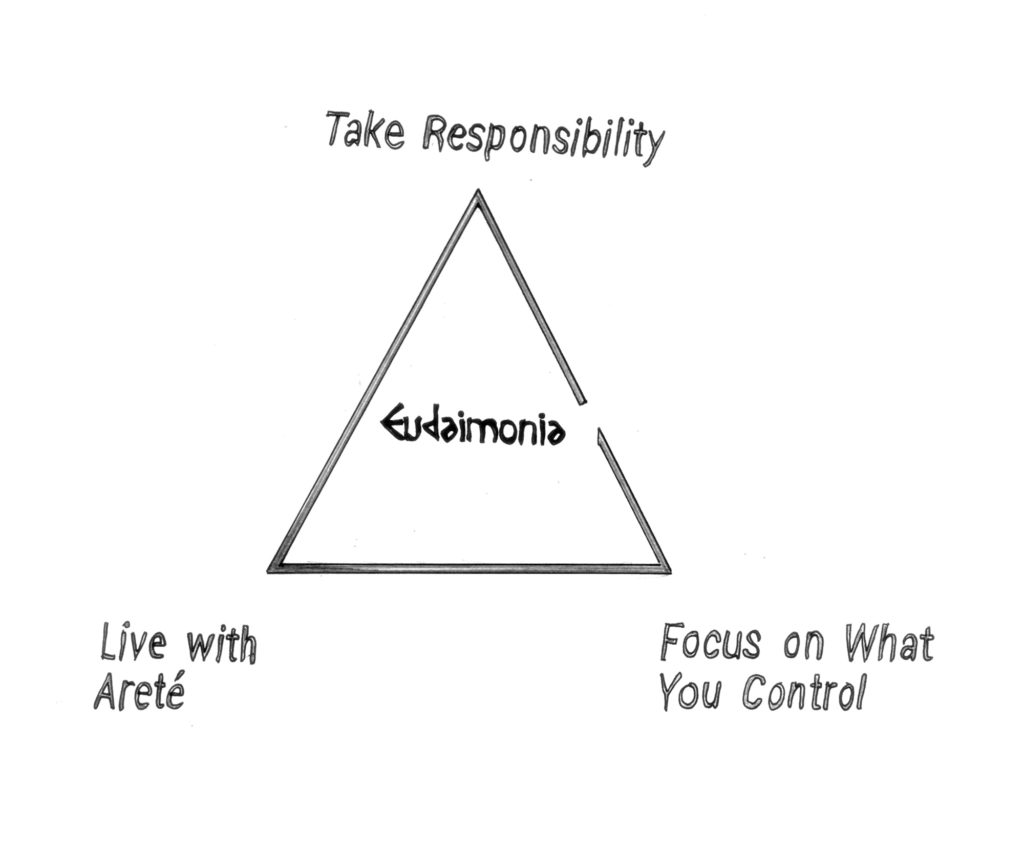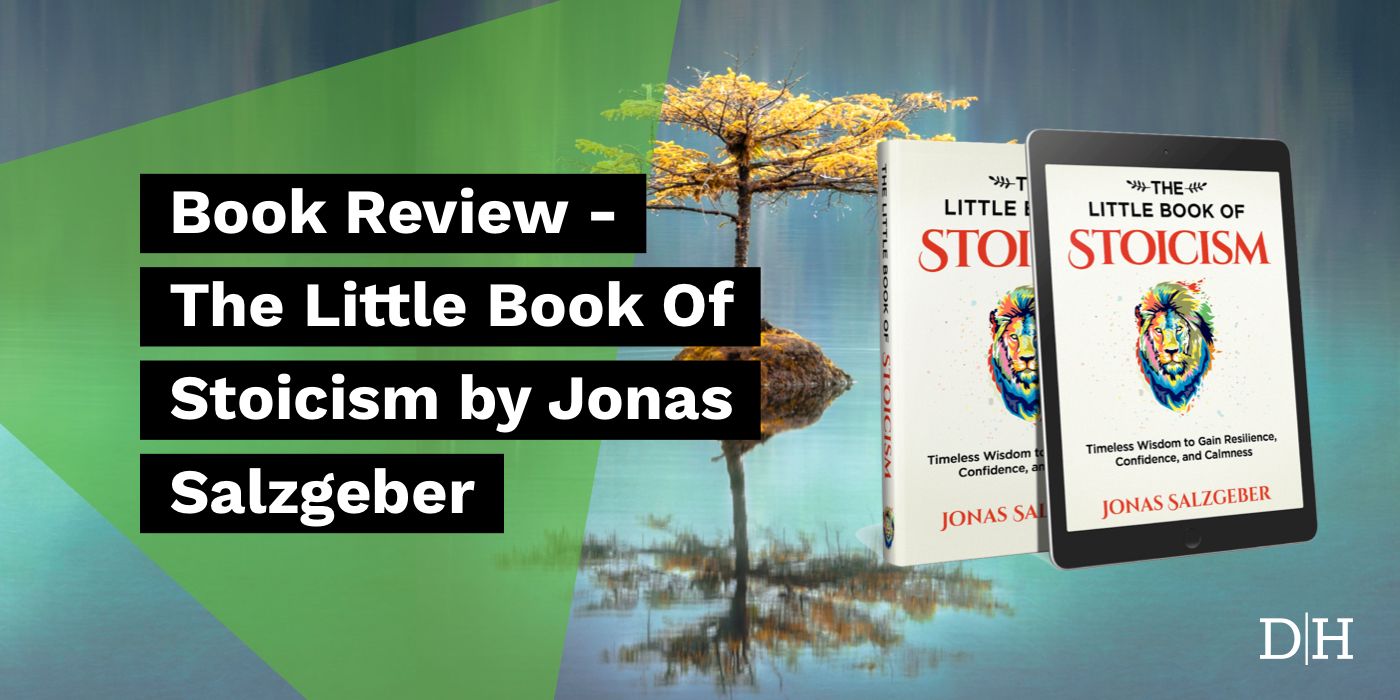Stoicism has become popular again. Yet nobody really knows what it’s all about. Just like an old reliable walking stick, it’s a guide to life-based on reason rather than faith that supports you in the pursuit of self-mastery, perseverance, and wisdom. Despite the philosophy’s age, dating back to Marcus Aurelius, its invaluable tools to excel in life feel modern and fresh.
By adopting Stoicism as a way of life, you’ll discover that philosophy is built for action, not endless head scratching. It’s a lifelong path to resilience, confidence, and calmness – essential skills to thrive no matter what life throws at you.
In Jonas Salzgeber’s new book, The Little Book of Stoicism: Timeless Wisdom to Gain Resilience, Confidence, and Calmness, he introduces the ready-to-use mix of timeless wisdom and empowering advice that will point the way to anyone seeking a calm and wise life.
A Modern Approach to Ancient Philosophy
The Little Book of Stoicism makes Stoic philosophy easy and actionable in the demanding modern world. You get what you’d expect from a Swiss author: a clear, comprehensive, and concise distillation of this exemplary philosophy.
Stoicism helps you deal more effectively with life’s challenges and supports you in living up to your potential. Salzgeber neatly structured his book in two parts. The first part tells you what the goal of Stoicism is and what you’ll get out of it, who its main philosophers were, and on the basis of the Stoic Happiness Triangle, the author created, how you will achieve such calm and resilient life.
The second part is all about putting the ancient wisdom from the book page into action in the real world. You find 55 Stoic practices for everyday living. It’s incredible how many useful mindsets the Stoics developed. They’re super easy to read, you can use whichever you find help you most, and you can always go back for more goodness to keep on improving your personal life.
The Stoic Happiness Triangle
At the center of the triangle is Eudaimonia—the ultimate goal of life all ancient philosophies agreed on. This is the main promise of Stoic philosophy and it’s about living a supremely happy and smoothly flowing life. It’s about thriving in our lives.

In the first corner, we find Live with Areté. This is about expressing your highest self in every moment. If you want to be on good terms with your highest self, you need to close the gap between what you’re capable of and what you’re actually doing.
In the second corner, we find Focus on What You Control. This is the most prominent principle in Stoicism. At all times, we need to focus on the things we control and take the rest as it happens. What’s important for your own flourishing is what you choose to do with the given external circumstances.
In the third corner, we find Take Responsibility. You’re responsible for your life because every external event offers an area you control, namely how you choose to respond to this event. It’s not events that make us happy or miserable, but our interpretation of those events.
This Stoic Happiness Triangle aims to break down the philosophy in a simple way so everybody is able to understand the philosophy’s main principles. Salzgeber explains each point in way more detail with lively analogies and quotidian examples. You really learn what Stoicism is all about in this part.
My Favorite Stoic Practices
Before the author dives into the practices, he helps the reader prepare. He says awareness and self-discipline are often necessary to put the practices into action. Because if we cannot observe our thoughts and actions, and if we don’t have the necessary self-discipline, how do we want to change and integrate new mindsets?
There are too many practices to adopt right away. And some I already use in my own life. In simple, these mindsets help you stay calmer when life punches you in the face, express what you’re actually capable of more often, and gain confidence on the way.
Here are some of my favorites:
- Become an eternal student – He shares this wonderful quote by Seneca: “Leisure without study is death – a tomb for the living person.” As you know, I’m all about getting better and reading books. We shouldn’t just leave the remnants of time for learning, but actually, create time for it. That’s how we grow.
- Choose courage and calm over anger – I quote from the book: “Anger, the desire to repay suffering, is brief madness, says Seneca. Because an angry man lacks self-control, is forgetful of kinship, is deaf to reason and advice, gets aroused by trifles, and doesn’t know what’s true and false – much like a falling rock which breaks itself to pieces upon the very thing which it crushes.”
- The Equanimity Game – I love this idea. We all get caught off guard sometimes, we make mistakes and act like jerks. The question is: How fast can we get back up? Don’t feel sorry for yourself, just dust yourself off and get back on track.
- Buy tranquility whenever possible – “Starting with things of little value—a bit of spilled oil, a little stolen wine—repeat to yourself: ‘For such a small price I buy tranquility and peace of mind.” This quote by Epictetus is just wonderful. We often get irritated by trifles. But it doesn’t need to be this way. If we’re aware enough, we can take a deep breath and move on without any reaction.
- Lead by example – Let’s lead with our actions instead of lectures. Do what you think is right. You read the book and agree with so many ideas, but there’s the danger that you don’t actually live them out. You might tell your friends about it, but don’t really do it. Show, don’t tell. This is what I firmly believe in.
Now of course, the above is only a tiny fraction of the book. Hopefully, it gives you an idea of what the book is about. The book could have well been called The Book of Stoicism, but I guess that’s simply a worse title.
The Little Book of Stoicism is packed with illustrations and practices that will show you how to deal more effectively with life’s challenges. Salzgeber’s engaging and easy-to-follow explanations of the timeless Stoic advice will help you flourish in today’s demanding world.
What do you think? Could you use some guidance and inspiration to live up to what you’re truly capable of? I surely took away many great insights from this wonderful book.




